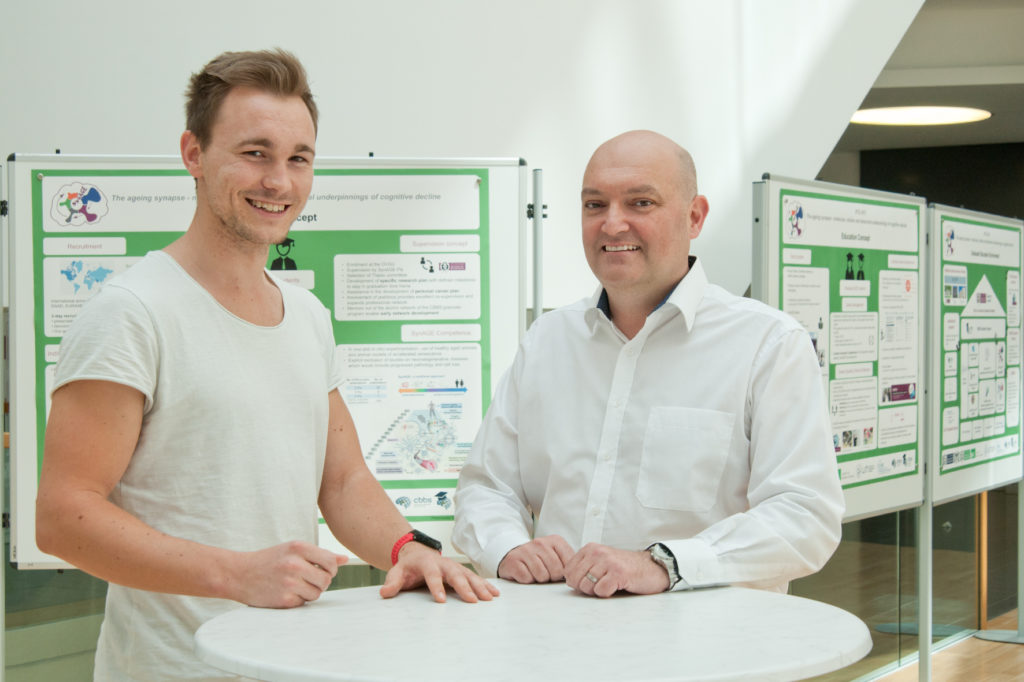
Performance monitoring (PM) improves memory encoding such that it prevents the encoding of false engrams and corrects engrams that turn out to be wrong. PM is an essential cognitive function that underlies the detection of performance problems and errors and the initiation of subsequent compensatory and adaptive mechanisms. In humans, the posterior medial frontal cortex (pMFC), particularly the anterior midcingulate cortex (aMCC) is a key structure representing PM signals, which indicate the need for adjustments (Ullsperger et al., 2014). Influential current theories suggest that PM builds on prediction errors serving as teaching signals which enable learning, but the interactions of PM and LTM encoding has not been studied extensively yet. Direct anatomical connections from the aMCC to the hippocampus via the cingulate bundle suggest close functional interactions. A small number of studies have reported functional interactions between activity in aMCC and the hippocampus (Hip) that appear to underlie learning from errors (Klein et al., 2007; Hester et al., 2008). Acetylcholine (ACh) plays a major role in cognitive functions such as long-term memory (LTM), attention, PM, and adaptive control (Dumas and Newhouse, 2011; Danielmeier et al., 2015), which have been shown to decline with increasing age. Whereas a reduction in ACh signaling (mainly due to neurodegeneration in the basal forebrain) has been shown to contribute to cognitive decline in pre-clinical and clinical Alzheimer’s dementia, the course of ACh activity across healthy aging is less clear. It appears that ACh availability is an important factor that can at least partly compensate for cognitive decline resulting from other changes, e.g., cortical impairment at the synaptic level (Janeczek et al., 2017). Furthermore, it has been proposed that the ability of the cholinergic system to modulate cognitive performance depends on synaptic integrity (Dumas and Newhouse, 2011).
Hypothesis: PM, in particular processing of feedback, strengthens encoding of correct information in LTM and devalues engrams of remembered associations that turned out to be incorrect via interactions between pMFC and Hippocampus (Hip). Older people are less able to utilize feedback to correct memory engrams, i.e. make more repeated errors and increasing ACh transmission is expected to alleviate individual (age-related) deficits in learning from errors, whereas blocking ACh receptors can mimic such deficits in young participants. We define the following Aims:
We will establish a paradigm that allows (a) to study the interaction of two major cognitive functions declining with age, PM and LTM, (b) to investigate the systemic and cognitive effects of age-related changes in synaptic interactions, and (c) to determine the role of ACh and its ability to compensate cortical dysfunction. Specifically, we will:
- investigate the mutual interactions of PM in pMFC and Hip-based LTM encoding.
- investigate the role of ACh in these interactions, its changes with healthy aging, and its modulation by pharmacological intervention with clinically established pharmaceuticals affecting cholinergic transmission.

Collaborations: TP12 Düzel (recruitment of participants after amyloid PET) TP10 Stork (cholinergic modulation of network activities), TP8 Seidenbecher/Gundelfinger (synapse modification mechanisms of cholinergic modifiers).
